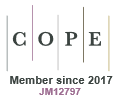Just Accepted
This article has been peer reviewed and accepted for publication. It is in production and has not been edited, so may differ from the final published form.
Restoring fire management to Australian deserts: progress after a decade of burning
Abstract
Background: Indigenous people used fire in Australia’s deserts over millennia. Colonisation interrupted these practices, but Indigenous and conservation sectors are now restoring desert fire management for cultural, social and biodiversity outcomes. However, evaluating progress is difficult: inter-fire intervals are long and variable; and dominated by extensive fires after above-average rainfall. Aim: To determine whether, despite these challenges, a decade of fire management has influenced fire regimes at four large, separated locations (each 1250 to 7850 km2) in Australia’s spinifex deserts. Methods: We used Landsat and MODIS imagery to create a >20-year fire history (1997-2019) at the four locations, then investigated temporal patterns in seven fire regime metrics, whilst accounting for rainfall variation. Results: Management caused a change in fire season (more burns in cooler months); a larger number of smaller fires; increased seral heterogeneity (burnt/unburnt patch sizes decreased, time-since-fire recovery stages more evenly distributed, mature vegetation extent stabilised). These changes occurred despite above-average rainfall in 2010-11. Conclusions: Management can change desert fire regimes, with expected cultural and biodiversity benefits. We provide recommendations for further improvement, noting that prescribed burning in remote deserts is operationally challenging, and investment is needed to meet capacity, knowledge sharing, monitoring, and research priorities.
WF25056 Accepted 27 September 2025
© CSIRO 2025


